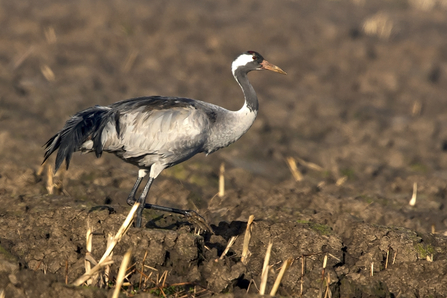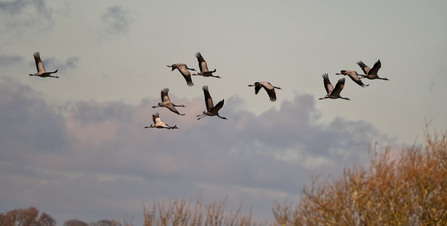- Survey results show 2023 was another successful year for the Common Crane, with a record 80 pairs confirmed in the UK and 36 young known to have fledged.
- Driven to extinction in the UK during the 16th century, the population is now at its highest level since the species returned in 1979.
- Conservation efforts to restore and protect Cranes' favoured wetland habitats can also help protect communities from flooding and lock away carbon to combat climate change.
Figures released today, World Wetlands Day, reveal there were at least 80 pairs of Cranes across the UK in 2023. It is the highest number since the species returned to UK shores in 1979 after being driven to extinction in the 16th century through hunting and the loss of their favoured wetland habitats.
The species' comeback began with the arrival of just a small number of wild birds to the Norfolk Broads. The population has continued to slowly spread, with 2023's results building on the previous high of 72 pairs in 2021. The latest figures show up to 69 pairs attempted to breed last year and a total of 36 Crane chicks successfully fledged. The total UK population is now believed to be in excess of 250 birds.
Alongside a reintroduction project where hand-reared Cranes were released on the Somerset Levels and Moors, conservation efforts to restore and protect the UK's wetlands have been key to turning around the birds' fortunes. Nature reserves have played a vital role and over 80% of the breeding population are now found on protected sites, including over a third on RSPB nature reserves alone.
Damon Bridge, chair of the UK Crane Working Group, said: "The conservation and protection of UK wetlands is helping our Crane population go from strength-to-strength. But that's only part of the story. Wetlands support countless other magnificent species, lock-away carbon to fight climate change and can hold back water to help reduce the impact of flooding.


